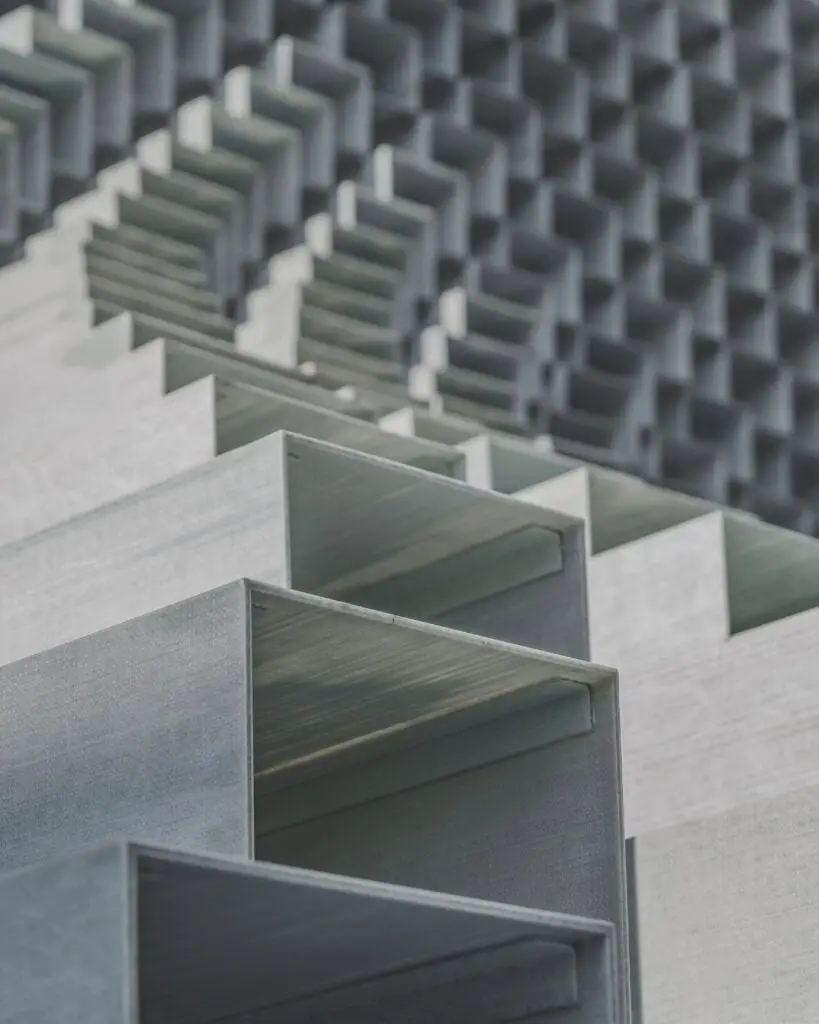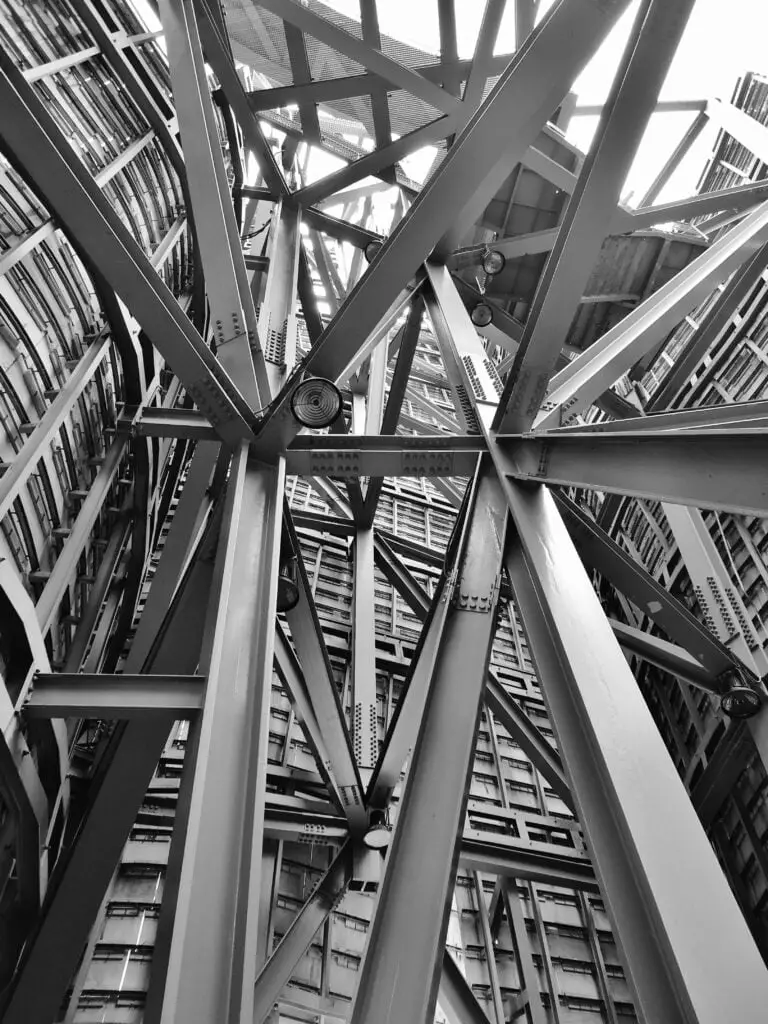One of the most often utilized materials in commercial and industrial building is structural steel. Why is that?
Structural steel plate is the primary building material used in structural steel structures because of its high strength, good machinability, and high ductility. In this post, we’ll look at the benefits of structural steel as a building material, its various varieties, as well as the various metal grades and their related features.
What is Structural Steel?
A flexible variety of carbon steel is structural steel. Structure steel has up to 2.1% carbon by weight. All structural steel grades must adhere to composition and dimensional tolerance requirements set by the American Society for Testing and Materials, or ASTM International.
Steel plates are likely to be utilized when durability and weight reduction are both important building considerations. Structural steel is flexible for a range of tasks since it is available in a variety of shapes in addition to structural steel plates.

Structural Steel Beams
Thousands of residential and commercial structures, vehicle beds, bridges, and machine bases are built using structural steel beams. The universal, or I-beam, has flanges on its top and bottom (sometimes, legs). These flanges frequently taper. The web refers to the central portion of the beam. Flanges prevent bending whereas the web is designed to resist blunt force.
H-beams
The universal I-beam is lighter than the H-beam, which has a higher force tolerance. They do not taper towards the edges.
T-beams
T-beams are similar to universal beams in shape but lack a bottom flange. Because of its reduced tensile strength and lack of a flange, the T-beam is less adaptable. They are therefore more frequently employed in reinforcement.
Structural Steel Channels
Similar to I-beams, channels have flanges that are separated vertically down the web. One flat face with parallel flanges is produced in this way. Channels can be bolted up to other flat faces thanks to the flat faces.
C-channels
On the inner flange surface, C-channels have a very modest slope. Usually, they are not used as principal load-bearing beams. Instead, they offer a lot of structural support, serving best as frames and braces.
Bearing Piles
In terms of shape, bearing piles and I-beams are comparable. However, the thickness of the bearing piles is constant throughout. In order to support vertical loads, they are mainly employed.
H-piles
H-piles are frequently buried in the earth to support superstructures’ deep foundations.
Structural Steel Angles
Structural steel angles are used in a variety of structures, from power towers and warehouses to everyday objects like chairs and bed frames. A steel bar with an L-shaped cross section that makes a 90 degree angle is known as a steel angle.
L-shapes
Leg lengths in L-shapes can be either equal or unequal. Both are excellent for boosting.
Hollow Structural Section
High-strength welded steel tubing is referred to as hollow structural section (HSS). They provide multidirectional load bearing and are made in round, square, and rectangular configurations. No matter the shape, the middles are hollow, as the name implies.
Important attributes of structural steel
The capacity of all structures to absorb energy is important. The versatility of structural steel is supported by three crucial mechanical properties:
Yield strength
Yield strength is the smallest amount of force necessary to cause permanent deformation. A tensile test is used to assess the yield strength at the first stress-strain curve point that deviates from proportionality. Steel intended for load bearing should have a yield strength of more than 35,000 psi. The minimum yield strength requirement for non-load bearing materials and steel frame is 33,000 psi.
Tensile strength
The greatest or ultimate stress that a material can endure before irreparable failure is known as tensile strength. Tensile strength refers to the point at which a material breaks, whereas yield strength is the initial point at which a material permanently bends. Tensile strengths are measured in terms of force per unit area and are often stated in pounds per square inch (psi). Normal tensile strength for structural steel is 36,000–50,000 psi, however it can go as high as 58,000–70,000 psi.
Elongation
The amount of elasticity before rupture is known as elongation. The tensile strength of a substance determines how much it will extend under stress. Elongation, which is measured as a percentage of the initial length of a material, is the point between tensile strength and yield strength, regardless of whether the material is bent, stretched, or compressed. Steel that is not structural is exempt from elongation requirements.
An Advantageous Building Material
Certain constructibility concerns are necessary for structural steel buildings. Do materials last? Sustainable? What will happen to the material when it is impacted by severe weather? How practical and simple to use is the building material?
These usage assessments are all met by structural steel.
High Strength to Weight Ratio
Use assessments for construction frequently give high strength to weight ratios priority since they show how useful a material is relative to its weight. In addition to being sturdy, structural steel is also rather lightweight. It is well renowned for having a high strength to weight ratio, which makes it lighter and more convenient to use than other metals.
Good Machinability
The good machinability of structural steel is another benefit. Free-machining materials may be quickly cut, readily achieve a good finish, use little power to cut, and do not degrade tools. Once more, this project’s advantages reduce economic concerns while minimizing the chance of tool damage and maintenance.
Ductility
Ductility is a factor that is particularly important for building construction. The ability of a material to be pulled or deformed without breaking is referred to as ductility. The term “ductility” in earthquake engineering refers to how well a structure can endure displacements brought on by ground trembling. Therefore, you need a material that has a suitably detailed steel structure and a level of elasticity that will allow it to withstand significant deformations before failing if you want a building that is earthquake ready (fractauring). Remember that an increase in carbon will result in an increase in strength but a decrease in ductility as we study structural steel grades.
100% Recyclable
Did you know that steel is the material that is recycled the most globally? Another clear benefit of steel is this. Steel can be recycled forever without losing quality because it is continuously recyclable.
Cost-effective
Because it is less expensive to produce initially and carries less hazards than other building materials, structural steel adds more value to a project. Its affordability, adaptability, and strength to weight ratio all have a significant impact on the overall cost of building.

What is a Charpy test and why is it important
The Charpy impact test determines how much energy can be absorbed by a certain substance, such as metals, ceramics, and polymers, and it’s used to assess how much that substance has deteriorated. It is a widely used evaluation method that shows how durable and high-quality a material is. The Charpy or pendulum impact test is still employed as a low-cost quality control procedure to assist assess whether a material is appropriate for a particular project.
In this test, a sample specimen with a notch is struck with a hammer on a pendulum arm. While the hammer blows in the opposite direction as the notch, the specimen is held firmly at each end. The amount of energy absorbed can be determined by tracking the pendulum arm’s slowing motion. It’s crucial to remember that a material’s toughness might change depending on impact under low-temperature circumstances and extra stress concentrators like notches and fractures.
What are the types of structural steel that go into structural steel buildings?
A36
The low-carbon, low-cost A36 steel is a popular choice because of its versatility and high yield strength (36,000 psi). A36 is frequently used for columns, beams, decking, and finish elements and can lengthen to around 20% of its original length. The ductility of A36 steel is adequate, although it is not employed for reinforcing.
A572
A572 is a type of HSLA (high-strength, low-alloy) steel plate. Similar in yield and tensile strength to A36 steel, this weldable low-alloy structural steel is more suitable for uses that call for higher strength to weight ratios. A572 is a fantastic material for transmission towers, roller coasters, and bridges since it is lighter than the equivalent constructed of carbon steel without sacrificing strength.
A588
Compared to A36 and A572, A588 steel has a yield and tensile strength more than 46,000 psi. A588 stands out from similar elongation materials with better atmospheric corrosion resistance and a longer life cycle. As a result, A588 satisfies the unique requirements of sectors needing outdoor solutions.
A514
A514 is an alloy steel that has been quenched and tempered, has a yield strength of 100,000 psi, and elongates between 16 and 18%. The structural steel A514 offers great performance, superior weldability, and toughness at low ambient temperatures. A514 is mostly utilized in cranes and other high wear machine applications to sustain big loads.
To see other material construction, please see here.
To know other construction guides, tips, and methodology for beginners, veterans, and contractors, please see here.

